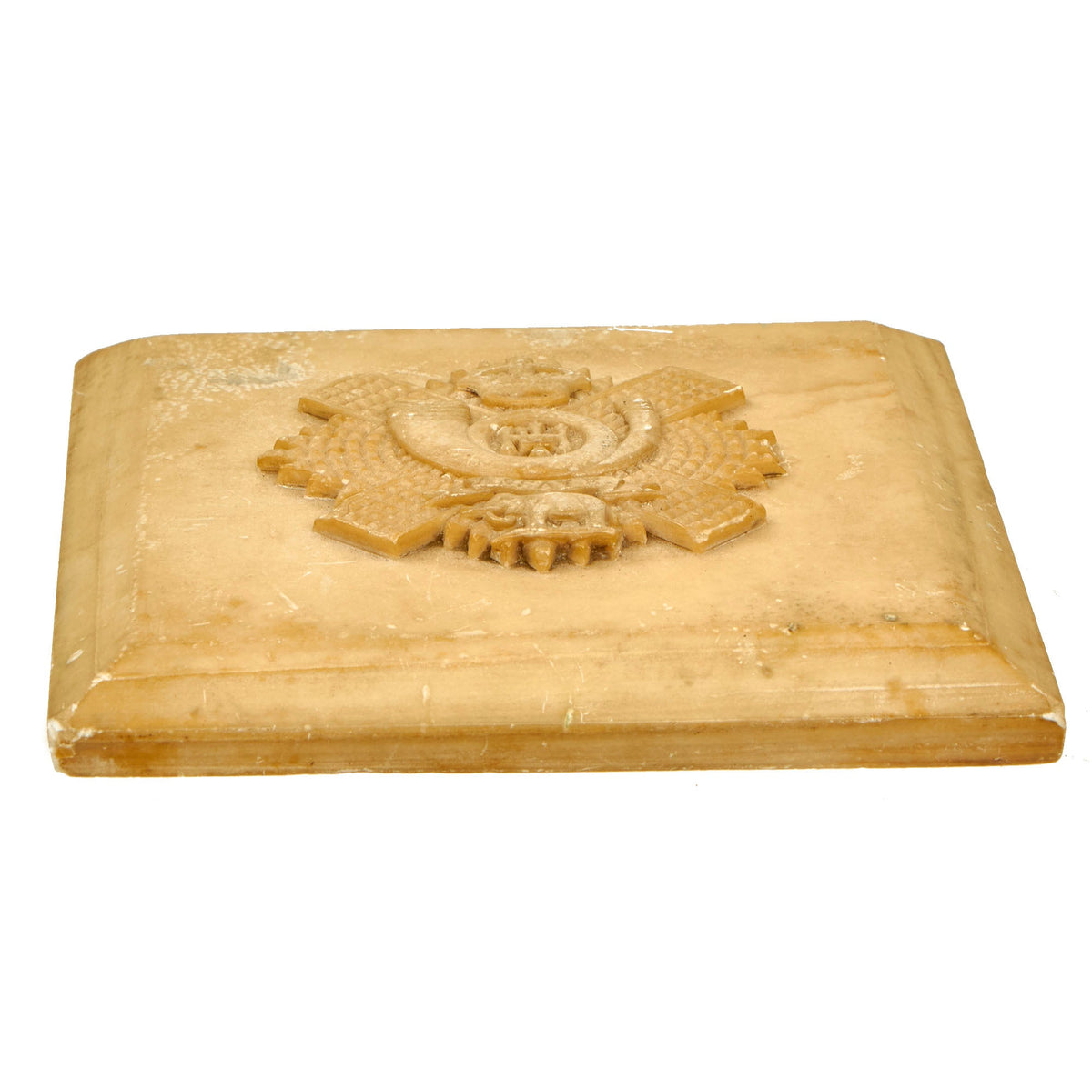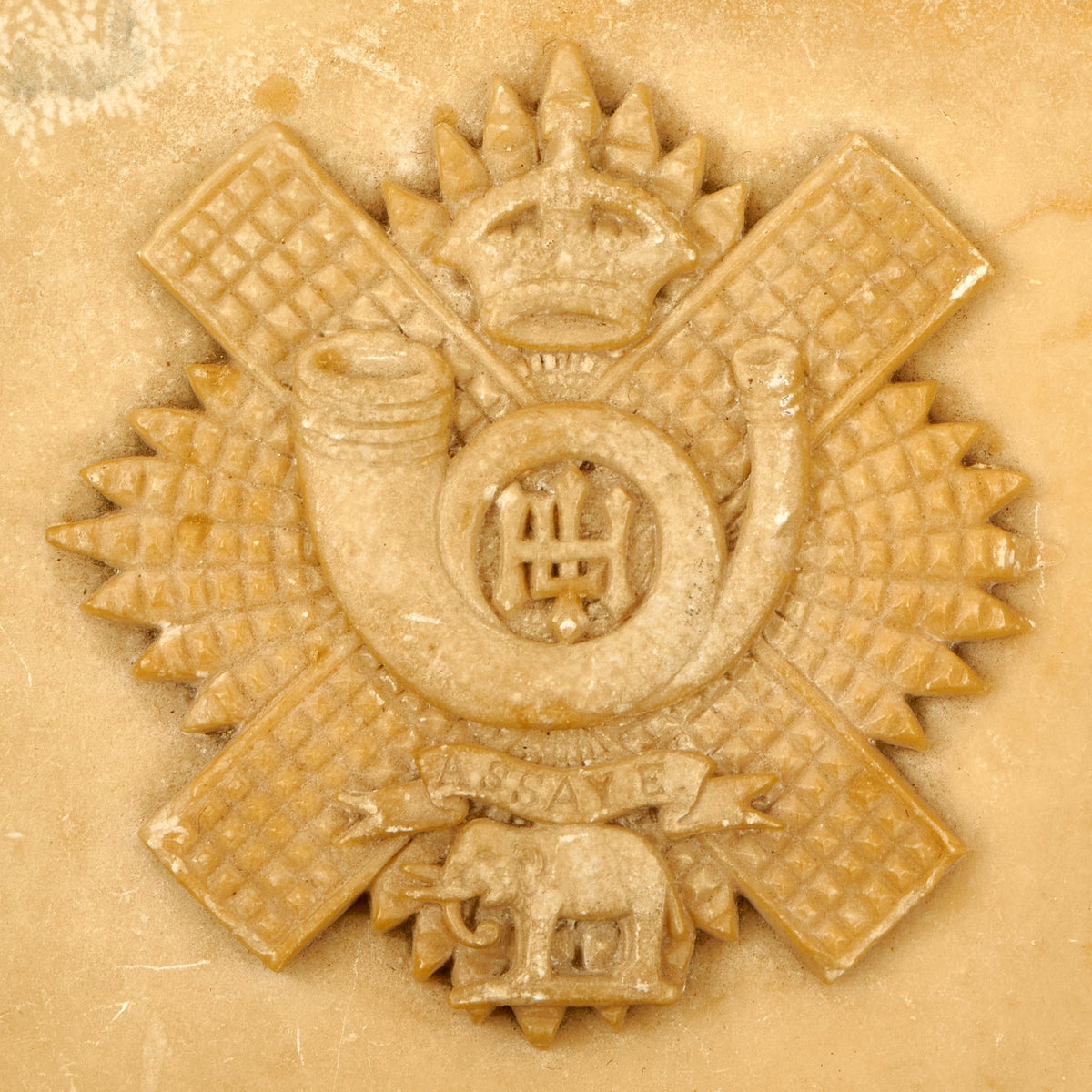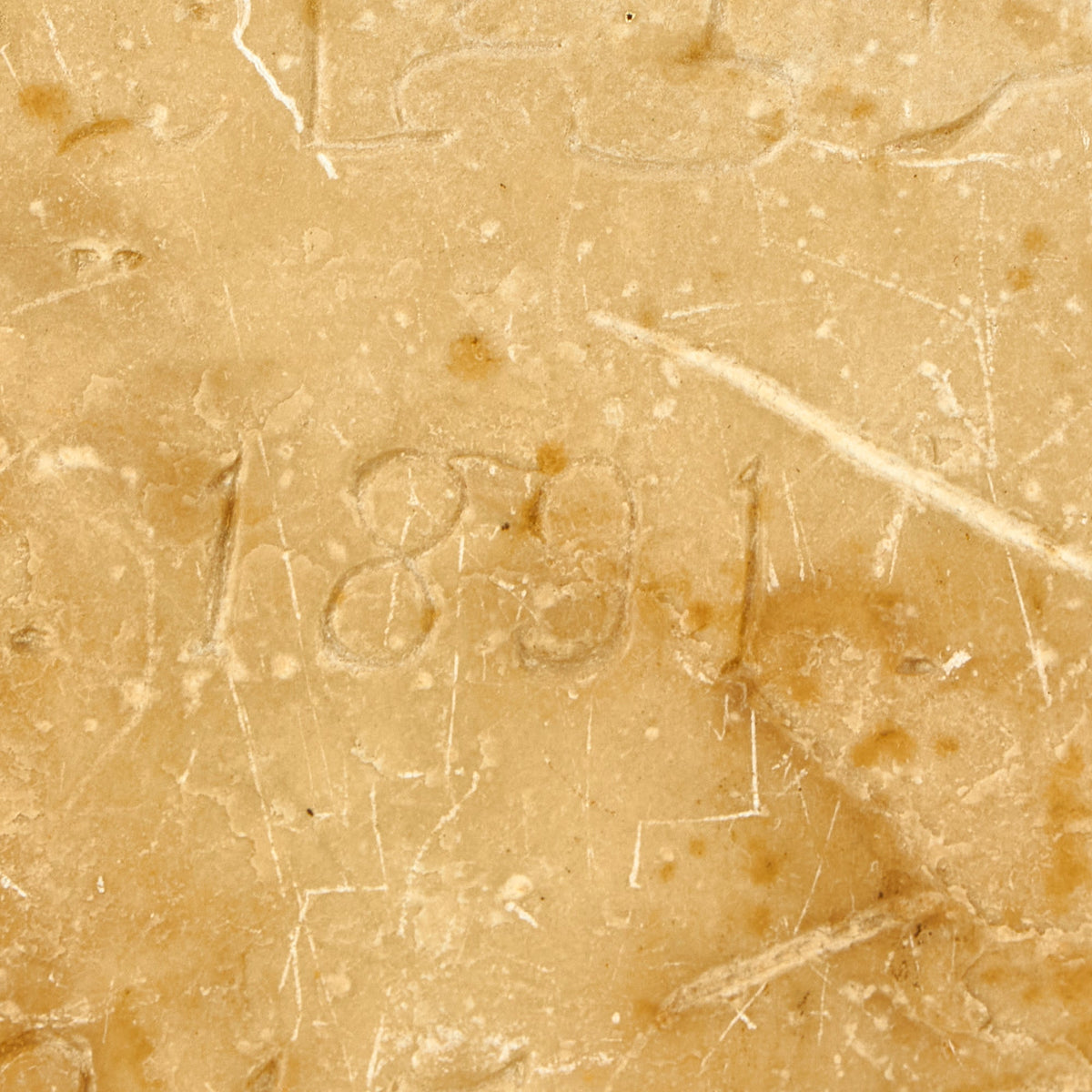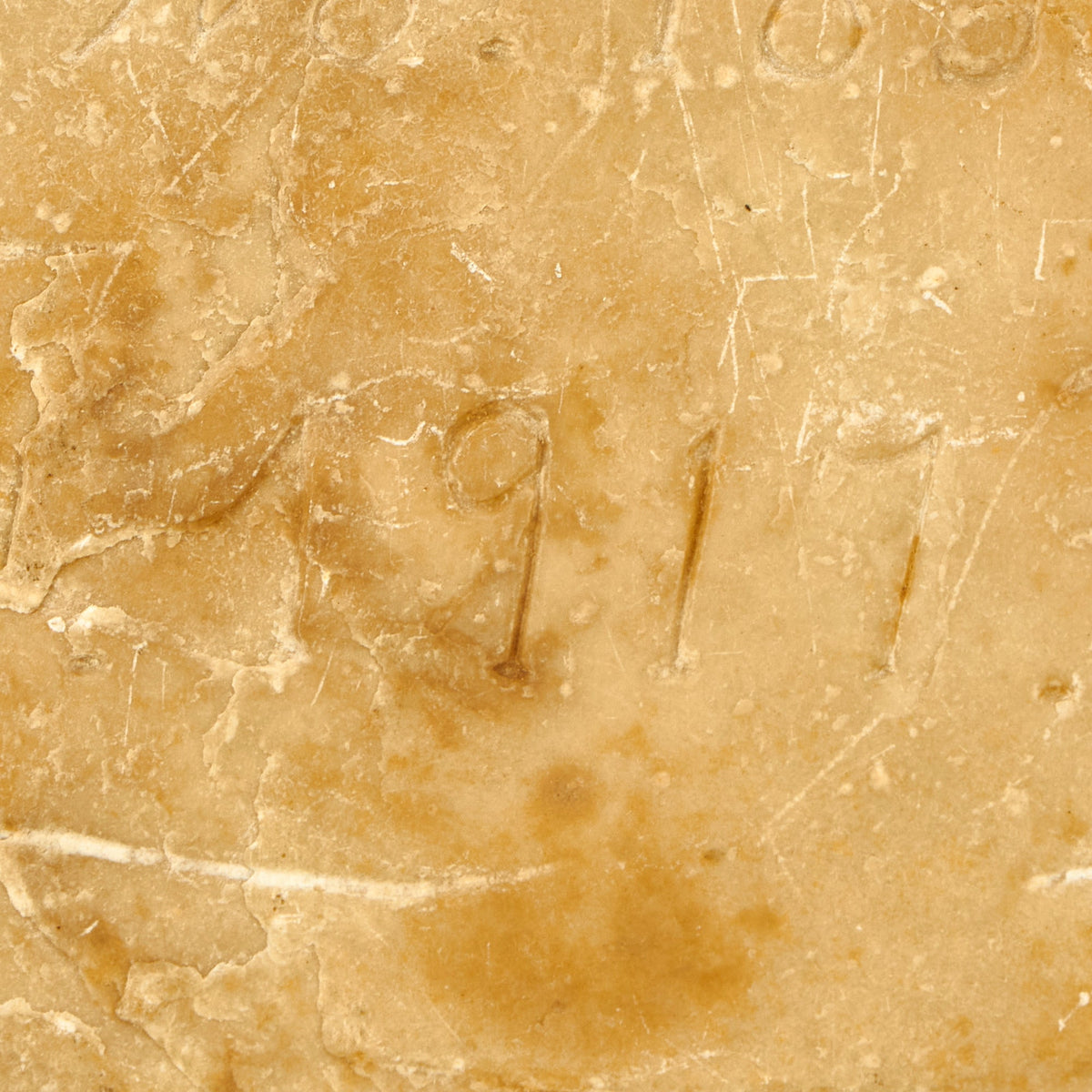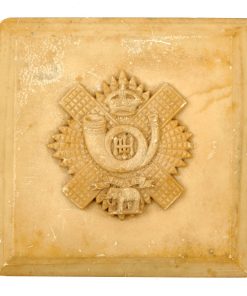Original British WWI Highland Light Infantry Hand Carved Sandstone Insignia Plaque Dated 1917 With Artist Signature In Arabic – Carved In Mesopotamia Original Items
$ 195,00 $ 78,00
Original Item: Only One Available. Now this is a beautiful and unique memento from WWI. This is a hand carved tile or plaque, made from sandstone in Mesopotamia. The carving was done by a local artisan and he left his signature in Arabic on the back along with the date 1917. The details of the cap badge on the face of the 5 ¼” x 5 ¼” tile is incredible and shows just how skilled this artist was.
The badge consists of a diamond-cut Star of the Order of the Thistle, an Imperial (King’s) crown superimposed on the upper point and having at its center a French bugle horn, the twist of which encloses the monogram ‘HLI‘. Below the horn is a small scroll marked ‘ASSAYE‘ and below that again, and over the lower point of the star, with an elephant on the ground.
The Assaye battle honor was awarded by the Governor General of British India to all East India Company battalions and British Army regiments that took part of the Battle of Assaye. The battle occurred on 23 September 1803, near the village of Assaye in western India where a small force under the command of Major General Arthur Wellesley defeated a 50,000 strong army of the Maratha Confederacy. The Royal Highland Fusiliers which were formed on 20 January 1959 by an amalgamation of The Royal Scots Fusiliers and the Highland Light Infantry, are the descendant of the 74th (Highland) Regiment of Foot who first became The Highland Light Infantry in 1881, are the only British infantry regiment to still carry the battle honor.
The condition is quite nice though there is chipping present but no significant damage with a clear image on the front.
A beautiful item that comes more than ready for further research and display.
Fast Shipping with Professional Packaging
Thanks to our longstanding association with UPS FedEx DHL, and other major international carriers, we are able to provide a range of shipping options. Our warehouse staff is expertly trained and will wrap your products according to our exact and precise specifications. Prior to shipping, your goods will be thoroughly examined and securely secured. We ship to thousands clients each day across multiple countries. This shows how we're dedicated to be the largest retailer on the internet. Warehouses and distribution centres can be located throughout Europe as well as the USA.
Note: Orders with more than one item will be assigned a processing date depending on the item.
Before shipping before shipping, we'll conduct a thorough inspection of the items you have ordered. Today, the majority of orders will be delivered within 48 hours. The delivery time will be between 3-7 days.
Returns
The stock is dynamic and we cannot completely manage it because multiple stakeholders are involved, including our factory and warehouse. So the actual stock may alter at any time. It's possible that you may not receive your order once the order has been made.
Our policy is valid for a period of 30 days. If you don't receive the product within 30 days, we are not able to issue a refund or an exchange.
You can only return an item if it is unused and in the same state as the day you received it. You must have the item in its original packaging.
Related products
Uncategorized
Band of Brothers ORIGINAL GERMAN WWII Le. F.H. 18 10.5cm ARTILLERY PIECE Original Items
Uncategorized
Uncategorized
Uncategorized
Uncategorized
Uncategorized
Uncategorized
Uncategorized
Australian WWII Owen MK1 Machine Carbine SMG Custom Fabricated Replica with Sling Original Items
Uncategorized
Uncategorized
Armoured Fighting Vehicles of the World: AFVs of World War One (Hardcover Book) New Made Items
Uncategorized
Uncategorized
Uncategorized
Uncategorized
Uncategorized
Uncategorized
Uncategorized

